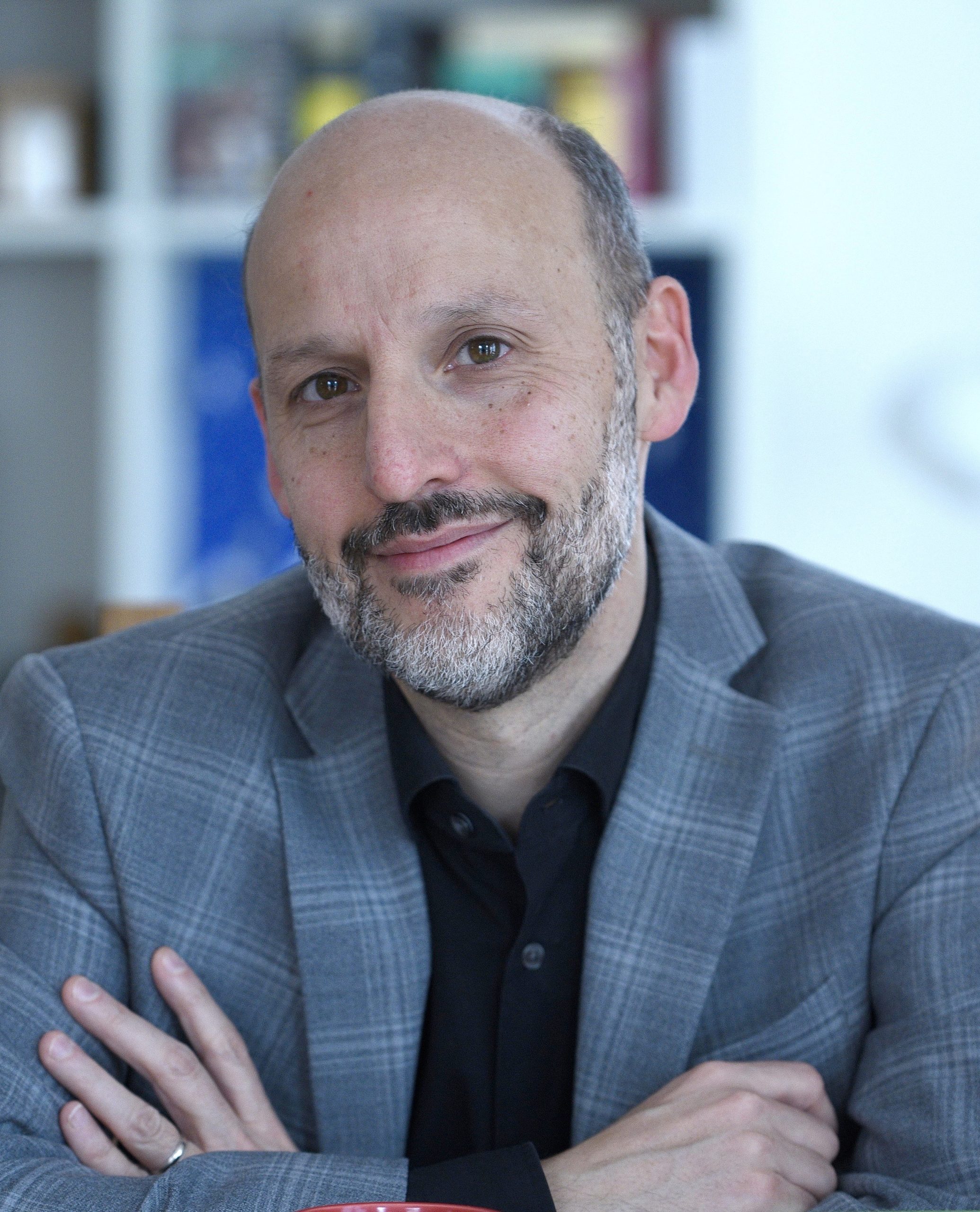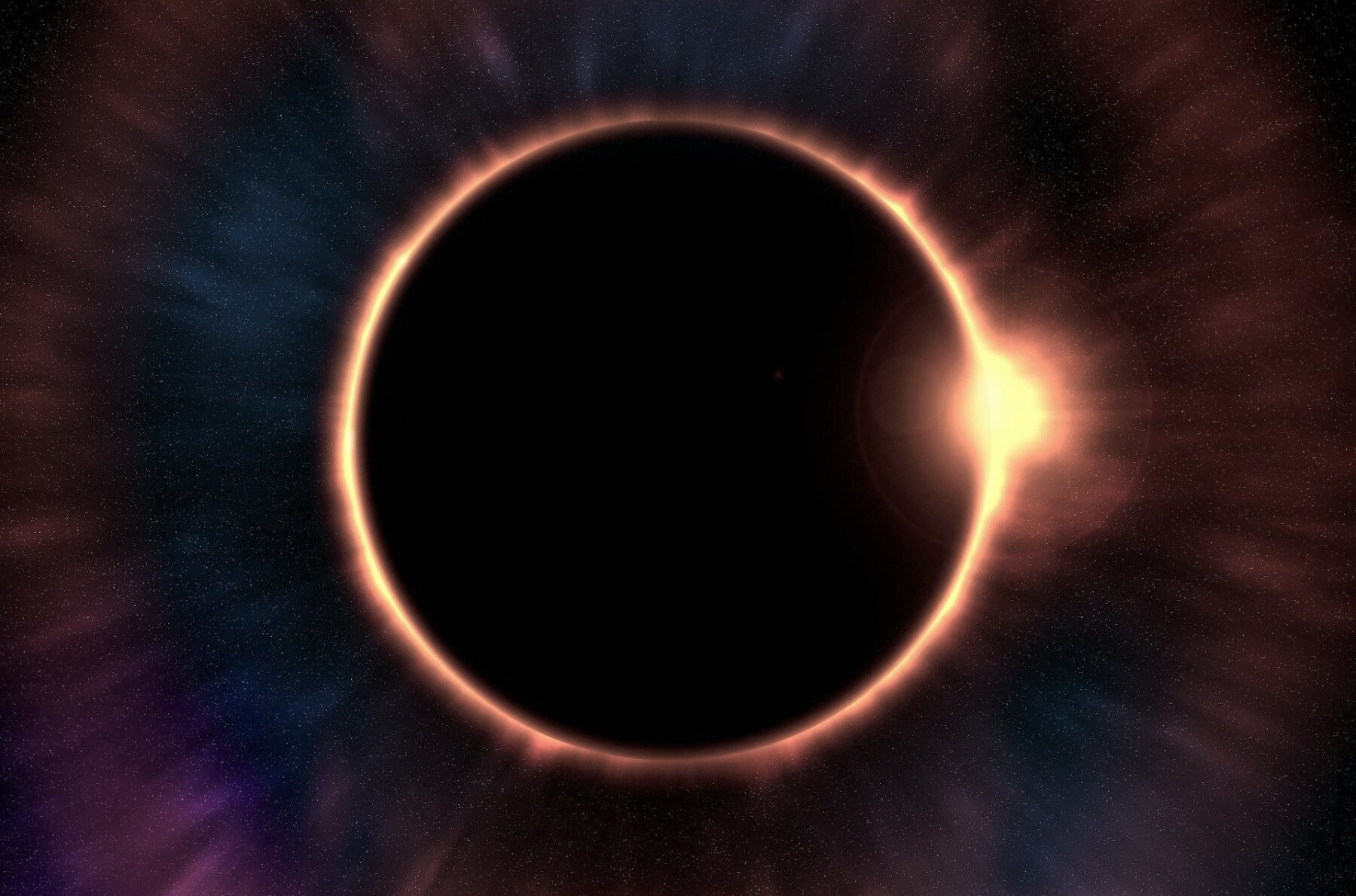Source: The New York Public Library via Unsplash
Space is a vast and elusive area of undefined width and endless depth. But with more and more technology being launched into orbit, other human concepts than just physics and engineering are required to get a grasp of the big void. One of these human concepts is international law. Despite space being infinite by definition, ever since the first human activities in orbit, it has not been some lawless field of anarchy. Entering: Space Law.
To get some insight into how space law manages to cover an ever-expanding area of human engagement with still endless realms to be explored by scientific research, we will take a look at the core treaties and collect answers to questions like: Who owns space? Who makes the rules? Who must oblige to these rules in the age of commercial spaceflight? And will Mars be colonised once the technical means allow us to travel there?
Space Law’s cornerstone: The Outer Space Treaty
The oldest treaty in the field of space law has remained the most relevant until today since it encompasses general guidelines for the use of outer space and establishes the framework of international space law, a previously non-existant legal field.
In the aftermath of the Sputnik I launch, the international community was terrified of the possibilities of war in space during the emerging space race between the Soviet Union and the United States. So terrified of the unforeseeable consequences for life on Earth, that in 1958 the General Assembly managed to bring the opposing nations to one table and created an ad hoc “Committee on the Peaceful Uses of Outer Space” (COPUOS). Starting out with then 18 member states, the committee nowadays comprises 95 member states collaborating on all matters of space and space flight. Their first body of work, the Outer Space Treaty (OST, formally called Treaty on Principles Governing the Activities of States in the Exploration and Use of Outer Space, including the Moon and Other Celestial Bodies), came into effect in 1967 and outlines basic principles that touch several areas of outer space exploration.
Basic Principles for a whole new Field of Human Exploration
As a core principle, the treaty sets the exploration and use of outer space to be carried out for the benefit and in the interests of all countries and ‘shall be the province of all mankind’. It constitutes a right to ‘free access’ of outer space by all states without discrimination. Thus, the OST stresses the equality between states and the obligation to share the benefits of space exploration with all countries. In comparison to other fields of international law, it is remarkable that the treaty also stresses that outer space is ‘not subject to national appropriation by claim of sovereignty, by means of use or occupation’.
As a reminiscence to the COPUOP’s goal to avoid a space war at all costs, the treaty further prohibits the placement of nuclear or other weapons of mass destruction in orbit or on celestial bodies, underlining this by allowing only peaceful purposes of using the Moon and other celestial bodies.
It also draws on first concerns regarding space debris, calling nations to avoid harmful contamination of space and celestial bodies, further establishing states to be liable for damage caused by their space objects, e.g., satellites. In accordance with these obligations, the treaty positions states as responsible for space activities whether carried out by governmental or non-governmental entities – a responsibility increasingly relevant today with commercial space flight and civil satellites all around.
What else is out there? Conventions providing Clarity
Since the entry into force of the Outer Space Treaty, the international community in the UNs space-related body has worked out several conventions and agreements to provide additional guidance for the ever-innovating field of outer space exploration. Besides the OST, the European Space Agency (ESA) and other space agencies regard four treaties as formative for the field.
One is the Rescue Agreement, which calls any state that is a party to the agreement to participate in rescuing spacecraft personnel who come to land within a state’s territory by accident. Same goes for the provision of outer space rescue if necessary. Unlike the OST, the Rescue Agreement mentions not only astronauts to fall under this special protection but any other staff of a space operation, which is important for any person’s legal protection in case of a space emergency.
A much-utilized instrument is the Registration Convention which calls for every object launched into space also to be registered with the United Nations Office for Outer Space Affairs (UNOOSA). The registration must include the name of the launching state as well as launching and function details of the space object. This provides an independent overview and detailed intelligence over the total number of objects in orbit.
Drawing on the question of liability, the Liability Convention demands that states bear international responsibility for all space objects launched within their territory. This links the eternal area of space to earthly borders and courts – but only for states that are party to the convention.
Rules for our celestial Neighbour: The Moon Treaty
While a lot of Space Law legislation encompasses, by nature, almost unmeasurable areas of space, the Moon Treaty deals with specifically this very celestial body as a placeholder for other planets – the only one humans were up until now able to set foot on. The treaty declares the Moon to be used for the benefit of all states and all peoples of the international community. It reiterates that lunar resources are ‘not subject to national appropriation by claim of sovereignty, by means of use or occupation’ and calls for ‘orderly and safe use of the natural lunar resources with an equitable sharing by all state parties in the benefits derived from those resources.’ With reference to humankind being already able to fly to the Moon, the treaty stresses that the ‘placement of personnel or equipment on or below the surface shall not create a right of ownership.’ This phrasing remains especially interesting with Mars rovers currently moving on the Red Planet’s surface.
Law in Space, Questions on Earth
In other areas of international law like the Law of the Sea, explicit borders are mentioned in treaties to determine and define for example where the territorial sea of the coastlines becomes open sea and which rules are applicable for the individual area. Whereas space treaties lack some common understanding of where exactly outer space begins. Some of the national legal texts on the matter mention kilometres-above-earth-surface-numbers to make space law more tangible and based on physical findings but there is no international accordance yet. This and questions regarding necessary amendments to partly more than 60 years old treaties are a passionately debated field in space law, especially with science and technology progressing faster than ever.
To answer the question who makes the rules for conduct in space: As in other fields of international law, it is an ongoing effort of nation states under the roof of the United Nations, born out of the desire to pave out a peaceful path for the exploration of outer space since the end of the 20th century. 31 years after the Cold War, the danger of space war seems less immediate but space law maintains the field to watch and provide solutions to problems as pointed out by Sebastien Moranta, coordinator of Studies at the Vienna based European Space Policy Institute (ESPI) in fortytwomagazine’s issue #5. “Imagine you wake up, and suddenly Google Maps isn’t running, because there has been a massive attack on GPS satellites. What we need to talk about now are new security breaches and new risks for any nation that invests significantly in space.” It is important to consider besides all the contracts designed to strengthen peace within the international community that every satellite constitutes a dual-use good able to serve military and civil purposes alike.
Following the Outer Space Treaty, every nation is responsible for every object launched into space within their borders, whether governmental or private, military or commercial. This entails a nations’ liability for the activities of all entities on their ground under international law. Applying these regulations to recent developments, for example the USA are responsible for whatever space tourism amusement Jeff Bezos and Elon Musk undertake starting within US borders.
Colonise Mars: Is Space Law preventing a new Space Race?
In theory, space law aims to prohibit the colonisation of Mars and every other celestial body since it states the absence of national sovereignty in outer space. In full application of this concept, no nation is able to call any square meter of outer space their own. Neither should any nation exclusively exploit resources found in outer space since treaties state the goal of space exploration as beneficial for all humankind without favouring any nation over another. However, in practice, only 5 nations and the European Union (with ESA) worldwide have full launching capacities (including human space flight).
This challenges the theory of space law since many nations lack the financial and scientific resources to compete in space exploration. A fact that could also endanger a just distribution of any future benefits of potential mining activities. Despite all that, the merged effort of space exploration is one of the biggest peace projects with international teams collaborating to advance science for human benefit, as manifested in joint endeavours as the International Space Station (ISS) – a project that also became a success story through contracts under space law.
Written by Lisa Zahrobsky
Unless otherwise indicated, all quotations are from the original legal texts of the respective treaties and agreements. They can be found here: https://www.unoosa.org/oosa/en/ourwork/spacelaw/treaties.html.
Wer entscheidet, was in unendlichen Weiten rechtens ist? Willkommen im Weltraumrecht!
Der Weltraum ist ein riesiges Gebiet von unbestimmter Weite und unendlicher Tiefe. In Zeiten, in denen immer mehr Technologie in die Umlaufbahn geschossen wird, sind weitere Konzepte als nur Physik und Ingenieurwissenschaften erforderlich, um den riesigen dunklen Raum abzustecken. Eines dieser Konzepte ist das Völkerrecht. Obwohl der Weltraum per Definition unendlich ist, ist er schon seit den ersten menschlichen Aktivitäten in der Umlaufbahn keineswegs ein rechtsfreier Raum, in dem bloß Anarchie herrscht. Dank des Weltraumrechts.
Um einen Einblick in die Art und Weise zu erhalten, wie es dem Weltraumrecht gelingt, einen ständig wachsenden Raum menschlichen Vordringens voller endloser, unerforschten Areale zu beschreiben, werfen wir einen Blick auf die wichtigsten Verträge. Wem gehört der Weltraum? Wer macht hier die Regeln? Wer muss sich im Zeitalter der kommerziellen Raumfahrt an diese Regeln halten? Und wird der Mars kolonisiert werden, wenn die technischen Mittel uns die Reise dorthin erlauben?
Der Grundstein des Weltraumrechts: Der Weltraumvertrag
Der älteste Vertrag auf dem Gebiet des Weltraumrechts ist bis heute auch der relevanteste, da er allgemeine Richtlinien für die Nutzung des Weltraums enthält und den rechtlichen Rahmen für das internationale Weltraumrecht bildet – einen Bereich, den es zuvor nicht gab.
Im Nachgang des Start von Sputnik 1 war die internationale Gemeinschaft beängstigt von der Möglichkeit eines Kriegs im Weltraum während des beginnenden Wettlauf ums All zwischen der Sowjetunion und den USA. So beängstigt von den unabsehbaren Konsequenzen für das Leben auf der Erde, dass UN-Generalversammlung die beiden Konfliktparteien 1958 an einen Tisch holte und einen Ad-hoc-Ausschuss für die friedliche Nutzung des Weltraums (COPUOS) schuf. Das Komitee, das damals aus 18 Mitgliedstaaten bestand, umfasst heute 95 Mitgliedstaaten, die sich in Fragen des Weltraums und der Raumfahrt abstimmen. Ihr erstes Werk, der Weltraumvertrag (offiziell Vertrag über die Grundsätze zur Regelung der Tätigkeiten von Staaten bei der Erforschung und Nutzung des Weltraums, einschließlich des Mondes und anderer Himmelskörper), trat 1967 in Kraft und umreißt grundlegende Prinzipien, die mehrere Bereiche der Weltraumforschung betreffen.
Grundprinzipien für ein neues Feld menschlicher Aktivitäten
Als Kernprinzip legt der Vertrag fest, dass die Erforschung und Nutzung des Weltraums zum Nutzen und im Interesse aller Nationen erfolgen und “der gesamten Menschheit vorbehalten” sein soll. Er begründet ein Recht auf “freien Zugang” zum Weltraum für alle Staaten ohne Unterschied. Somit betont der Weltraumvertrag die Gleichheit zwischen den Staaten und die Verpflichtung, die Früchte der Weltraumerschließung mit allen Ländern zu teilen.Im Vergleich zu anderen Bereichen des Völkerrechts ist es bemerkenswert, dass der Vertrag auch betont, dass der Weltraum “nicht der nationalen Aneignung durch Souveränitätsansprüche, Nutzung oder Besetzung” unterliegt.
Als Reminiszenz an das Ziel der COPUOS, einen Weltraumkrieg unter allen Umständen zu verhindern, verbietet der Vertrag außerdem die Platzierung von nuklearen oder anderen Massenvernichtungswaffen in der Erdumlaufbahn oder auf Himmelskörpern und unterstreicht dies, indem er nur die friedliche Nutzung des Mondes und anderer Himmelskörper erlaubt.
Der Vertrag stützt sich auch auf die ersten Bedenken hinsichtlich des Weltraummülls und fordert Staaten auf, eine schädliche Verunreinigung des Weltraums und der Himmelskörper zu vermeiden. Er legt fest, dass Staaten für Schäden haften, die durch ihre Flugobjekte, z. B. Satelliten, verursacht werden. Im Einklang mit diesen Verpflichtungen macht der Vertrag Nationen für ihre Weltraumaktivitäten verantwortlich, unabhängig davon, ob sie von staatlichen oder nichtstaatlichen Stellen durchgeführt werden – eine Verantwortung, die heute angesichts der kommerziellen Raumfahrt und der vielen zivilen Satelliten immer wichtiger wird.
Was sonst gibt es da draußen? Mehr Konventionen für mehr Klarheit
Seit dem Inkrafttreten des Weltraumvertrags hat die internationale Gemeinschaft im Rahmen des Weltraum-bezogenen UN-Gremiums mehrere Übereinkommen und Vereinbarungen ausgearbeitet, um zusätzliche Orientierungshilfen für den sich ständig weiterentwickelnden Bereich der Erforschung des Weltraums zu bieten. Neben dem Weltraumvertrag betrachten die Europäische Weltraumorganisation (ESA) und andere Raumfahrtbehörden vier weitere Verträge als prägend für diesen Bereich.
Eines davon ist das Weltraumrettungsübereinkommen, das jeden Staat, der Vertragspartei des Abkommens ist, dazu auffordert, sich an der Rettung von Raumfahrtpersonal zu beteiligen, das versehentlich auf dem Hoheitsgebiet eines Staates gelandet ist. Das Gleiche gilt für die Bereitstellung von Weltraumrettung, falls erforderlich. Im Gegensatz zum OST fallen im Weltraumettungsabkommen nicht nur Astronauten unter diesen besonderen Schutz, sondern auch alle anderen Passagiere eines Flug ins All, was für den rechtlichen Schutz sämtlicher Personen im Falle eines Notfalls im Weltraum wichtig ist.
Ein viel genutztes Instrument ist das Weltraumregistregistrierungsübereinkommen, das vorsieht, dass jedes Objekt, das in den Weltraum geschossen wird, auch beim Büro der Vereinten Nationen für Weltraumangelegenheiten (UNOOSA) registriert wird. Die Registrierung muss den Namen des Startstaates sowie Angaben zu Start-Daten und zur Funktion des Flugobjekts enthalte. Das ermöglicht einen unabhängigen Überblick und detaillierte Informationen über die Gesamtzahl von Flugobjekte in der Umlaufbahn.
Ausgehend von der Frage der Haftung verlangt das Weltraumhaftungsübereinkommen von allen Vertragsstaaten, dass sie die internationale Verantwortung für alle in ihrem Hoheitsgebiet gestarteten Weltraumobjekte tragen. Damit wird der unendliche Raum an irdische Grenzen und Gerichte gebunden- aber nur für Staaten, die Vertragsparteien des Übereinkommen sind.
Regeln für unseren himmlischen Nachbarn: Der Mondvertrag
Während viele Gesetze zum Weltraumrecht naturgemäß nahezu unmessbare Bereiche des Weltraums umfassen, befasst sich der Mondvertrag speziell mit eben diesem Himmelskörper als Platzhalter für andere Planeten – dem einzigen, auf den Menschen bislang einen Fuß setzen konnten. Der Vertrag erklärt, dass der Mond zum Nutzen aller Staaten und aller Völker der internationalen Gemeinschaft genutzt werden soll. Er bekräftigt, dass die Mondressourcen “nicht Gegenstand nationaler Aneignung durch Souveränitätsansprüche, Nutzung oder Besetzung” sind, und fordert eine “geordnete und sichere Nutzung der natürlichen Mondressourcen mit einer gerechten Teilhabe aller Vertragsparteien an den Vorteilen, die sich aus diesen Ressourcen ergeben”. In Bezug auf die Tatsache, dass die Menschheit bereits in der Lage ist, zum Mond zu fliegen, betont der Vertrag, dass die “Platzierung von Personal oder Ausrüstung auf oder unter der Oberfläche kein Eigentumsrecht begründet”. Diese Formulierung ist angesichts der Marsrover, die sich derzeit auf der Oberfläche des Roten Planeten bewegen, besonders interessant.
Vorschriften im All, offene Fragen auf der Erde
In anderen Bereichen des Völkerrechts, wie etwa dem Seerecht, werden in Verträgen explizite Grenzen genannt, um beispielsweise festzulegen, wo genau territoriale Küstengewässer zur offenen See werden und welche Regeln für das jeweilige Gebiet gelten. In sämtlichen Weltraumverträgen hingegen fehlt ein gemeinsames Verständnis darüber, wo genau der Weltraum beginnt. In einigen nationalen Rechtstexten werden zwar spezifische Kilometerzahlen über der Erdoberfläche genannt, um das Weltraumrecht greifbarer zu machen und auf physikalische Erkenntnisse zu stützen, aber es gibt noch keine internationale Übereinstimmung. Dies und die Frage nach notwendigen Änderungen der zum Teil mehr als 60 Jahre alten Verträge sind ein leidenschaftlich diskutiertes Feld im Weltraumrecht, zumal Wissenschaft und Technik schneller denn je voranschreiten.
Um die Frage zu beantworten, wer die Regeln für das Verhalten im Weltraum aufstellt: Wie in anderen Bereichen des Völkerrechts handelt es sich um eine kontinuierliche Anstrengung der Nationalstaaten unter dem Dach der Vereinten Nationen, die aus dem Wunsch geboren wurde, der Erforschung des Weltraums seit Ende des 20. Jahrhunderts einen friedlichen Weg zu ebnen. 31 Jahre nach dem Kalten Krieg scheint die Gefahr eines Weltraumkrieges nicht mehr unmittelbar gegeben zu sein, aber das Weltraumrecht ist nach wie vor das Feld, auf dem Probleme beobachtet und gelöst werden müssen, wie Sebastien Moranta, Studienkoordinator am Europäischen Institut für Weltraumpolitik (ESPI) mit Sitz in Wien, in der fünften Ausgabe des fortytwomagazine betont: “Stellen Sie sich vor, Sie wachen auf und plötzlich funktioniert Google Maps nicht mehr, weil es einen massiven Angriff auf GPS-Satelliten gegeben hat. Worüber wir jetzt reden müssen, sind neue Sicherheitslücken und neue Risiken für jede Nation, die in erheblichem Umfang in den Weltraum investiert.” Neben all den Verträgen, die den Frieden innerhalb der internationalen Gemeinschaft stärken sollen, ist es wichtig zu bedenken, dass jeder Satellit ein Dual-Use-Gut darstellt, das zivilen und militärischen Zwecken gleichermaßen dienen kann.
Nach dem Weltraumvertrag ist jede Nation für jedes Objekt verantwortlich, das aus ihren Grenzen hinaus ins All geschossen wird, unabhängig davon, ob sie staatlich oder privat, militärisch oder kommerziell sind. Daraus ergibt sich die völkerrechtliche Haftung eines Staates für die Aktivitäten aller Einrichtungen auf seinem Boden. Wendet man diese Bestimmungen auf die jüngsten Entwicklungen an, so sind beispielsweise die USA für alle weltraumtouristischen Ausflüge von Jeff Bezos und Elon Musk verantwortlich, die innerhalb der US-Grenzen beginnen.
Kolonisiert den Mars: Verhindert Weltraumrecht einen neuen Wettlauf im All?
In der Theorie zielt das Weltraumrecht darauf ab, die Kolonisierung des Mars und jedes anderen Himmelskörpers zu unterbinden, da es die Abwesenheit nationaler Souveränität im Weltraum festhält. In voller Anwendung dieses Konzepts kann keine Nation auch nur einen Quadratmeter des Weltraums ihr Eigen nennen. Ebenso wenig darf eine Nation die im Weltraum gefundenen Ressourcen exklusiv ausbeuten, da in den Verträgen das Ziel der Weltraumforschung als vorteilbringend für die gesamte Menschheit festgelegt ist, ohne eine Nation gegenüber einer anderen zu bevorzugen. In der Praxis verfügen jedoch weltweit nur fünf Nationen und die Europäische Union (mit der ESA) über volle Startkapazitäten (einschließlich der bemannten Raumfahrt).
Dies stellt die Theorie des Weltraumrechts in Frage: Vielen Nationen fehlen die finanziellen und wissenschaftlichen Ressourcen, um bei der Erforschung des Weltraums zu konkurrieren, was auch eine gerechte Verteilung der potenziellen künftigen Wertschöpfung im All gefährden könnte. Aber trotz alledem ist die Weltraumforschung eines der größte Friedensprojekte mit internationalen Teams, die zusammenarbeiten, um die Wissenschaft zum Nutzen der Menschheit voranzubringen, wie sie in gemeinsamen Unternehmungen wie der Internationalen Raumstation (ISS) zum Ausdruck kommen – ein Projekt, das auch durch Verträge im Rahmen des Weltraumrechts zu einer Erfolgsgeschichte wurde.
Von Lisa Zahrobsky
Sofern nicht anders angegeben, stammen alle Zitate aus den ursprünglichen Rechtstexten der jeweiligen Verträge und Abkommen. Sie können hier eingesehen werden: https://www.unoosa.org/oosa/en/ourwork/spacelaw/treaties.html.














